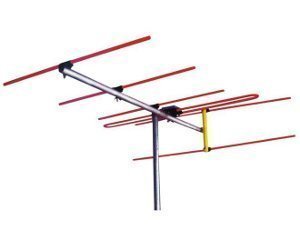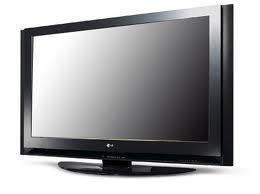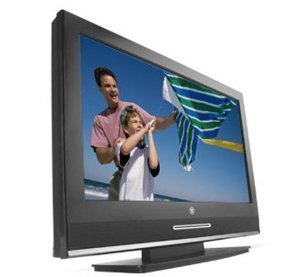"Low Tech" is the best way to describe a basic television antenna. Television antennas feature a series of elements cut to exact lengths which are designed to receive a compatible frequency from a transmitted television signal. Each element has a pair of metal rods (primarily aluminum based) extending from a boom. The key difference between various brands of television antenna is based on the quality of construction and how well anodized the metal is. As the metal oxidizes and the rivets rust, the active elements tend to lose contact. When metal oxidizes you will almost always experience inadequate reception. Outdoor television antennas are more prone to wear than their indoor counterparts. However, outdoor television antennas also provide additional clarity and reliability. Additionally, the picture and sound will be clearer the higher the antenna is placed.
Antennas are available for UHF, VHF, or a unique combination signal. On a technical level, UHF signals are more prone to attenuation (reduced signal strength) than lower band VHF signals. "Channel cut" antennas are designed to receive a single channel. These types of antennas are often used by cable companies to receive local television signals for rebroadcast. You can also purchase a 'channel cut' antenna from a local electronics supply store should you require a dedicated signal. The primary use of such an antenna in a home application is when a single station has a transmitter located in a different direction from all the others. When that station is especially difficult to pick up, a 'channel cut' antenna may be the perfect solution for improved reception.
Most television antennas are directional and need to be pointed toward the transmitter location for the television signal you are trying to receive.
Gain refers to the antenna's ability to receive signals at a specific frequency which is why it is advisable to purchase an antenna with a higher gain rating. Such antennas will be relatively longer than most antennas and will contain additional cross pieces.
Front-to-back-ratio is the specification that makes a television antenna directional. Front-to-back refers to how much better the antenna can receive signals coming from the direction the antenna is pointed when compared to signals coming from the opposite direction. Keep in mind; the bigger the antenna and the more elements present the higher the gain and front-to-back-ratio. In this case, the bigger the antenna, the better your reception will likely be.
While installing the antenna on the roof of your home, there are additional tips that you can do to assist in clear reception. 1) The boom of the antenna should be positioned in the direction of the originating transmission tower and, 2) the cross pieces should be placed horizontally or vertically depending on the direction of polarization of the transmitted signal. These steps are important when considering the function and usefulness of a television antenna. If you don't position the cross pieces correctly, you will contend with issues such as graininess or ghosting while attempting to watch your favorite shows.
Grains are the result of weak signals or can be caused by some inherent technical glitch with the antenna itself.
Ghosting occurs when the signal is received multiple times by the antenna. In most cases this is caused because of signal reflection from neighboring buildings causing additional faded images to be visible.




Follow Us!